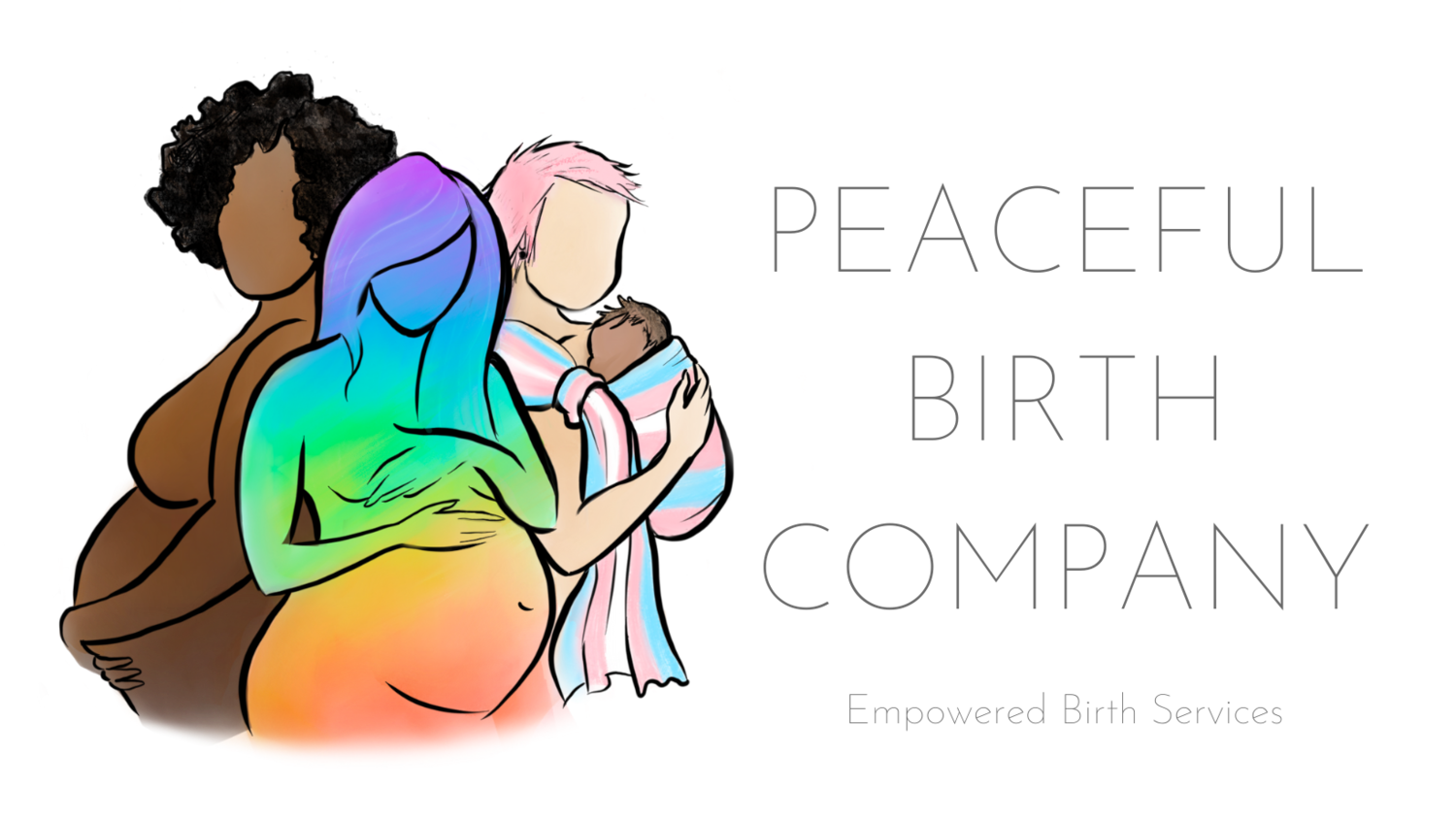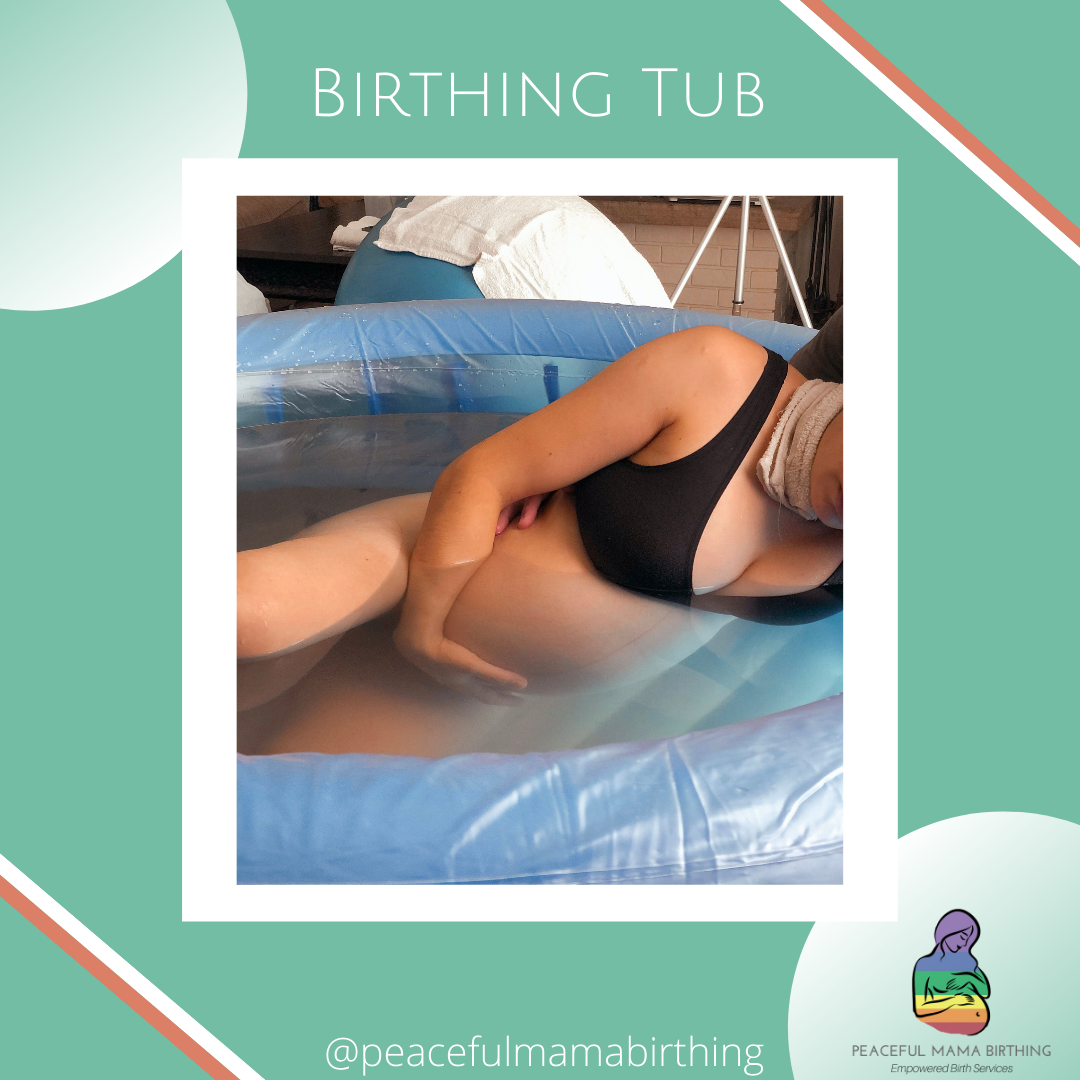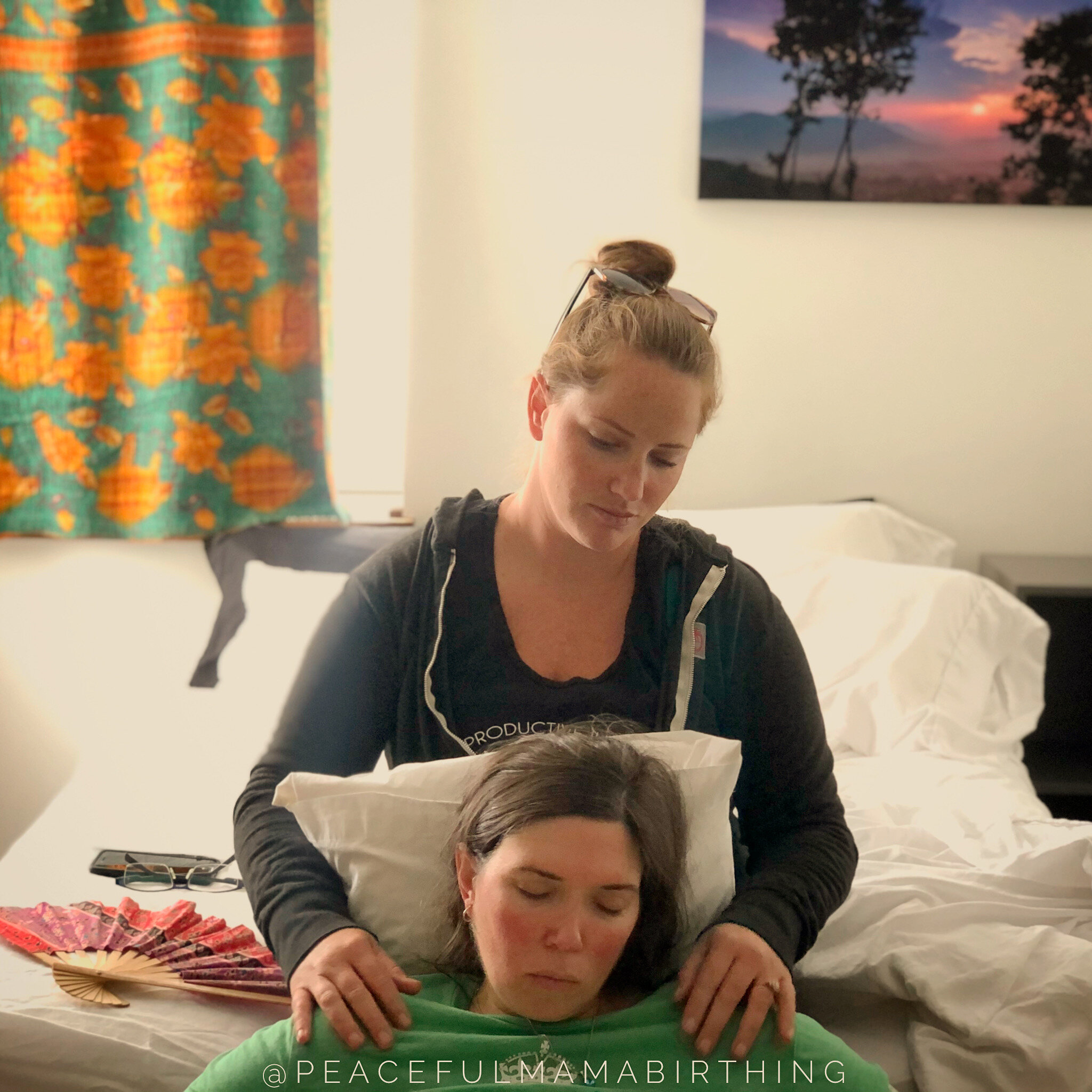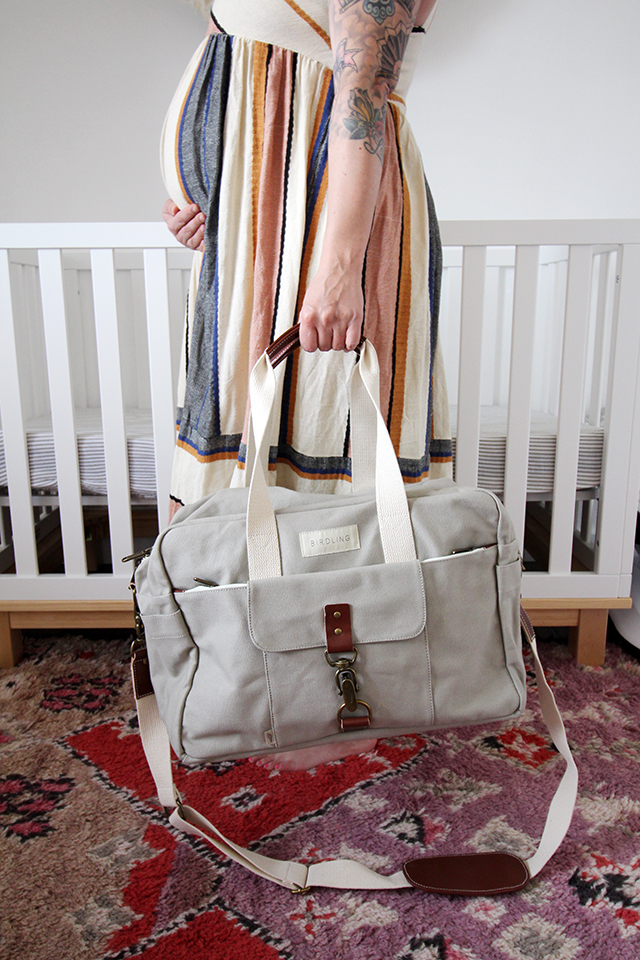I had the distinct pleasure of teaching Megan and Jared, rather informally, just a few days after my HypnoBirthing practitioner training. They had already taken a HypnoBirthing class a few months prior, so it was a good opportunity for me to hone my skills and learn the flow of the class. They were so kind, understanding, and open hearted through the whole process! Megan’s estimated due date was 11/25. We finished our last class on 11/20, celebrated Thanksgiving together on 11/23, and on the morning of 11/24 I received a text from Megan that read “Call me when you wake up. The turkey is done.” (Best text ever). I called her and she said her water had broken after going to the restroom around 6am. I honestly wish I was there to witness it because it sounded hilarious! Her membranes released right in front of Jared while their dog stared in disbelief. I told her now is a great time to get in the zone. Listen to Rainbow Relaxation and Affirmations, put on essential oils, relax, relax, relax! She said she felt super relaxed and was about to eat a hearty meal of eggs and waffles, a late pregnancy favorite.
I went over to visit and have dinner around 7pm. Megan was in a great place, relaxing comfortably (or as comfortably as you can at 40 weeks pregnant) in bed. Consistent surges had not yet started, but she was feeling cramping in her legs and back. The entire day she’d had continual spotting and releasing of membranes. She ate some Thai food, I did an induction hypnosis, and she rested for a few hours. Around 10:45pm, Jared texted me that they were going to the hospital because they wanted to have the baby checked since her membranes had been released for so long. She was admitted around 11pm at Poudre Valley Hospital, where the nurses are truly a dream! They did a vaginal check and an initial reading on Megan and the baby. She was 1.5cm dilated and 60% effaced already! The midwife did want to induce, but all signs showed that Megan and baby were completely healthy, so we asked to wait 24 hours after her membranes initially released before considering interventions. Jared and I got the room prepped: dimmed the lights, turned on the essential oil diffuser, covered the clock, and turned on music. Every time a nurse walked in they’d say “Wow! It smells amazing in here!”
The baby’s heart rate seemed to drop when Megs was in certain positions, so she laid on her side, where baby was content, and was able to get a few more hours of off and on rest. I went home to get a few hours of sleep as well. Jared texted at 6:15am on 11/25 saying they had decided to give her Cytotec (a prostaglandin pill) to help speed up the softening of the cervix. She had begun cramping shortly before then, indicating labor was about to start, so the Cytotec may have sped things along a bit. By the time I arrived back at the hospital around 7:30am, Megs was in labor! She was beautifully calm and relaxed, breathing through each surge perfectly. Jared was providing for her every need, giving light touch massage and reminding her how relaxed she was. They made a great birthing team and the room was filled with this beautiful energy of soft yellow light!
Megan was mostly lying on her side because earlier in the morning the baby was still not a fan of many other positions. She was on a constant monitor, so it was easy to see when the baby’s heart rate fell. They decided to use a bed pan for urination since even getting up to go to the bathroom seemed to cause a drop. I saw that Megan’s surges began to lull and even stop at times, so I thought it might be a good idea to get her up and moving again around 10am while Jared went to get some fresh air. This movement seemed to start a new phase of her labor as surges went from 3-4 minutes apart to about 2 minutes apart and became more intense. Fortunately, baby seemed completely OK with the switch, as long as Megan stayed elongated, not curling up her knees or sitting. She continued to peacefully breathe through each wave and her faced literally looked like she was sleeping the entire time. She had gone deeply inward and rarely opened her eyes. At 11am, we drew a bath for Megs in the tub where she did some incredible work. Her surges were intense, but she managed to stay calm and make some low moans when they got to be stronger. Around 11:30am Megs exited the tub because she was getting cold. I spoke to our acupuncturist friend, Lindsay, and she helped guide me with some laboring pressure points. She was a huge help, telling me about points that initiate uterine surges, encourage baby to descend, release endorphins, and even increase endurance! Megan kept calmly breathing through the surges, moving from the bed to a standing position where myself or Jared would provide encouraging words and light touch massage. At 1pm, Megan began to seem a little worn out from the hours of inward work and she had that long awaited moment of “I’m not sure how much longer I can do this”. She also had some bleeding and mentioned that she may need to have a bowel movement. All three of those signs combined made me think she might be close to completion! I went to get the midwife and nurse who said “we can come check but that’s HIGHLY unlikely”.
Sure enough, when the midwife checked Megan’s cervix, she was 9cm dilated, 90% effaced, and baby was at +1! The look on the midwife’s face was priceless, as I believe she saw the true power of HypnoBirthing! For a first time mom to move quietly from 1.5cm to 9cm in under 6 hours is pretty remarkable. Megs was starting to feel the natural expulsion reflex and did a wonderful job of breathing through it for a while. However, she went with her body’s strong desire to push when the sensation came. She pushed for over an hour, and baby was so close the entire time! Her stats dropped a bit from all of the hard work, so they offered her oxygen. She kept going, switching between breathing down and pushing. She saw her baby’s head in a mirror, felt the softness of its hair in between surges, and continued on. Each surge stretched her body a little bit more, allowing for the entrance of her sweet baby. Her best friend Summer came to photograph the birth but ended up helping to hold a leg toward the end so Jared could receive his baby. They didn’t know the gender so we were all full of anticipation. Finally, at 2:59pm, Baby Boy Heath exited his mother’s body (with his hand on his head!) and entered his father’s hands in a calm I can barely explain. He was perfect in every way! Beautifully pink, head full of dark hair, breathing immediately. He looked exactly like Jared and Megan both at the same time. He moved up to his mother’s chest, as everyone in the room had eyes filled with tears of joy.
Jory Levitt Heath weighed in at 6 pounds, 13 ounces, and 20 inches long. He began nursing less than an hour after entering the world, seemed to recognize his dad’s voice, and then fell into a sweet, peaceful sleep. Megan had just accomplished something magical and stunning and innate. She birthed her baby in a serene and perfect way, in the face of obstacles that could have easy derailed her plan. She and Jared handled everything with such intelligence and grace that their birthing team felt compelled to do everything they could to avoid unnecessary interventions. Megan could have easily accepted Pitocin as soon as she entered the hospital, as they recommended, but she knew it wasn’t necessary just yet. Her body and her baby still had a plan and she was going to follow it. As a new Doula, I learned a lot about the delicate balance of encouraging a calm, natural birth while ensuring the safety of mom and baby. When membranes rupture and labor doesn’t start, there is a real risk of uterine infection. However, at no point did Megan or the baby show any signs of distress. The umbilical cord was not prolapsed. Any time the baby’s heart rate dropped, it was easily righted by a change in position. When birthing in a hospital setting, it is important to remember that everyone there has your best interest in mind. They’ve been trained to avoid any and all risks, which is perfectly understandable. At times, however, this caution can take all power away from the mother and devalue the strength and knowledge of her birthing body. I’m looking forward to learning more about this dichotomy throughout my career in childbirth. Thankfully (and not surprisingly), the nursing staff and the midwife were incredibly supportive and kind to all of us. I am absolutely thrilled that Megan and Jared trusted the natural birthing process and were able to learn the true power of the female body. There’s nothing like it in the world!
Congrats to the Heath family! Thank you for giving me the honor of witnessing a miracle.
Katy Iengo, HBCE





















































